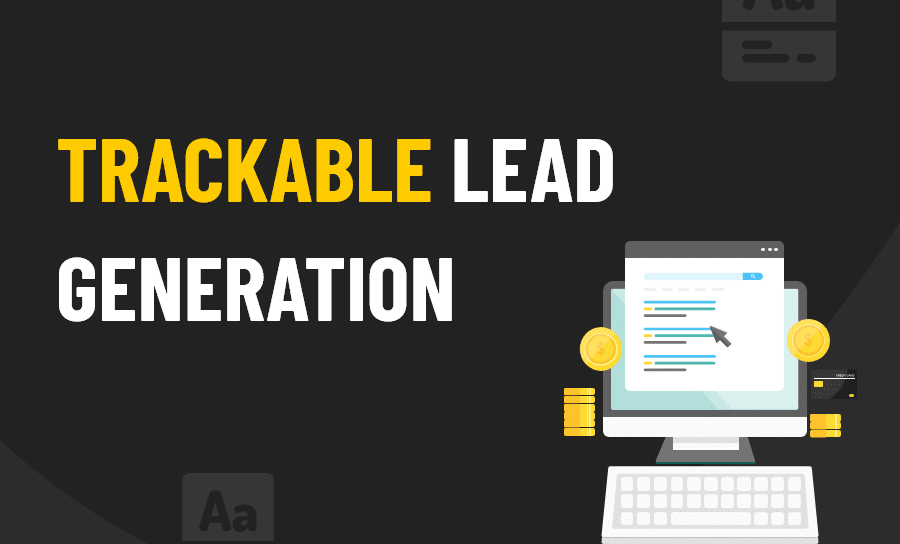Trackable Lead Generation Strategies: Maximize Results
Lead generation is a very long and challenging process to bring in revenue. With that being said, it is essential to keep track of this process. There are many trackable lead generation strategies, which I will be going over.
I will be discussing 7 strategies that can get complex, so it is important to consider a lead generation agency.
Before I get into these strategies, there is a section I wanted to explain. This next section is the “Calls to Action” — these actions will be referenced throughout the article. Thus, I wanted to give some background information.
Calls to Action

Calls to action (CTAs) will capture the attention of potential leads that direct them towards a specific action. This includes ads, emails, landing pages, etc. You can track the action a prospect takes and then use it to measure conversion rates.
Social Media ads
Email Campaign
Landing page
I will mention the landing page in a later section, but we all know its importance. This will determine how long visitors will stay on your site.
If a landing page is very captivating, then a visitor may be interested in your product or service. If the landing page has many issues and is not appealing, then a visitor will most likely leave. That is not the action we are aiming for.
We want the visitor to be interested in getting to know the company.
We are now ready to discuss some trackable strategies.
7 Trackable Lead Generation Strategies
Conversion Rates

Let’s talk about conversion rates! A conversion rate is the percentage of your leads that respond to the calls to action.
To measure conversion rates, you will need two things – a campaign goal and a percentage of potential leads who complete the conversion goal.
Conversion rates can be applied in the following ways:
- Visitors-to-leads: the number of visitors who convert to become verified leads.
- Leads-to-opportunity: the number of leads that get transferred to the sales team
- Opportunity-to-win: the number of opportunities that become actual paying customers.
Time to Conversion
Next is the time-to-conversion metric. This is important to keep track of during the lead generation funnel to understand your sales cycle length.
This metric shows how long it takes for a visitor to become a verified lead. We can calculate this metric by seeing the total time spent by all visitors then divide by the total number of leads.
If visitors aren’t experiencing a smooth process, then you may lose out on potential sales. With that being said, try to minimise your time-to-convert metric to generate more leads.
Click-Through Rate
The click-through rate shows the percentage of viewers that click your call to action.
You will have separate CTRs to track for each call to action. Referring back to the actions, this will result in CTRs for the landing page, email, and each social media platform.
Return on Investment

Source:investorjunkie
The return on investment is a percentage value to determine if you are making enough money to justify your business venture.
It is arguably one of the most important metrics for your business.
Your ROI will calculate the following:
- Total costs for every stage of your funnel
- Total income you can potentially make for each one of your customers
Cost Per Click
The CPC is the cost that advertisers must pay for a single click from users viewing their ad. This can be done on social media such as Facebook and other blogs. However, it is important to factor in the costs of acquiring traffic because this can be expensive.
Time on page
This is also a pretty straightforward strategy. I have mentioned before that the longer someone stays on your site is important. This tells you a lot about the impression your site portrays.
Cost Per Lead

The cost per lead is similar to the cost per click. It is the total amount of money you spend to acquire a lead. Or, we can refer to this as the average cost per lead.
Conclusion
These were just some trackable lead generation strategies. I covered performance and cost metrics, but there are also channel metrics. A lot goes into lead generation, and I would highly recommend a lead generation specialist to cover all the calculations.






